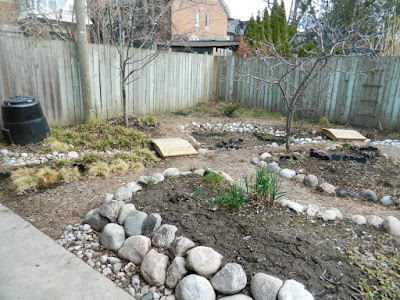Cleaning Up Your Garden in the Fall Isn't Necessary
There's one garden I look after in Toronto's Riverdale neighbourhood that never experiences the glory of what's known in the landscaping business as a "fall cleanup." Typically, every October or November, a garden is "put to bed" or "closed for the winter" (amusing metaphors!) by having all dead or dying perennial stems, stalks and flowers removed or leaves raked (more likely blown) out. For most gardens, this isn't necessary. The seedheads and stalks can feed overwintering birds and provide homes for beneficial insects while a layer of leaves acts as mulch and protects your perennials somewhat from heaving due to freeze and thaw (especially if a thick blanket of snow is absent.) Lastly, the dead stems can also provide some "winter interest" by catching a bit of the snow and wind (when you experience four solid months of winter like I do, you'll take it!)
I've profiled this "ecological garden" in the past in a post titled "A Tale of Two Toronto Gardens--An Ecological and Formal Garden: And Never the Twain Shall Meet?" which has only native (to southern Ontario) species and no cultivars. It's actually a "lower-maintenance" garden to look after as the perennials and shrubs are pest and disease free (except the American Plum (Prunus americana) which always gets scale and needs some horticultural oil sprayed on at this time of the year.)
Coming out of winter, however, all of last year's stalks and flowers need to be cut down in preparation for another season full of colour and pollinator activity.
 |
| Riverdale Toronto spring garden clean up before |
 |
| Riverdale Toronto spring garden clean up after |
 |
| Riverdale Toronto spring garden cleanup before |
 |
| Riverdale Toronto spring garden cleanup after |
 |
| Toronto Riverdale spring garden clean up |
 |
| Toronto Riverdale spring garden clean up after |
 |
| Toronto Riverdale spring garden cleanup before |
 |
| Toronto Riverdale spring garden cleanup after |
No comments:
Post a Comment